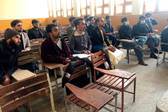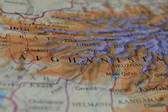The Taliban Approach to Counterterrorism
STRIVE Afghanistan Practitioner Summary
Recent global developments have seen an increasing interest in non-Western responses to terrorism. Over the past two years, the STRIVE Afghanistan team has invested considerable energy in developing a deep understanding of the Taliban’s approach to counterterrorism and counterinsurgency.
After retaking power in August 2021, the Taliban’s initial approach to dealing with insurgencies appeared to rest upon brutally repressing any perceived threats. However, under closer inspection, this approach also includes some more diverse elements.
The regime has, for example, sought to approach Shi’a and Salafi ulema to defuse tensions.
The Taliban’s counterinsurgency has been directed at several groups.
However, our team’s main focus has been on the Taliban’s efforts against the most capable of these actors, the Islamic State.
LSE blog: The Islamic State and the Taliban’s Counter-terrorism
The Taliban’s Evolving Strategy
The extreme and brutal repression initially enacted by the Taliban to combat the Islamic State was not necessarily devoid of an inner logic. The Taliban’s tactics and understanding of their impact can be seen to adhere to the following theories of change.
However, the Taliban came to accept that in most circumstances, extreme repression was ineffective or even counterproductive, given the potential risk of collateral damage that could drive individuals into the ranks of the insurgents. This led the regime to employ violence that was specifically targeted against the insurgents.
As the Taliban managed to get a grip on running the Afghan state, they also developed and implemented tactics to choke off IS-K’s funding and logistics.
Alongside these coercive measures, the Taliban also experimented with reconciliation and reintegration schemes for active insurgents. Although successful in some areas, these efforts were ultimately discontinued. Nevertheless, they demonstrate the variety of approaches the Taliban has employed.
Related Practitioner Summaries
Project sponsor
Funded by the European Union
The research on which this summary is based was funded by the European Union. The contents are the sole responsibility of the authors and do not necessarily reflect the views of the European Union. The European Union holds full copyright for the text of this summary.












